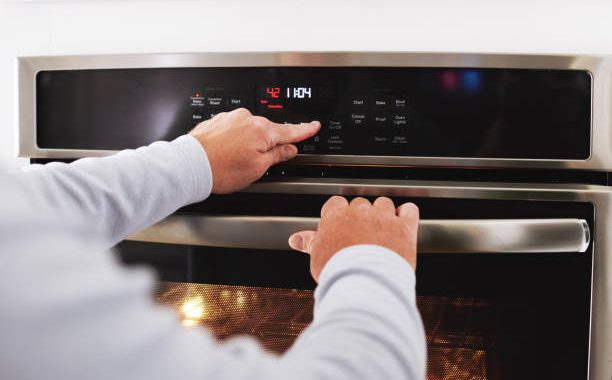The convenience of modern ovens equipped with self-cleaning functions has revolutionized kitchen maintenance, offering a hands-free approach to eliminating baked-on food and grease. However, like any technology, self-cleaning features can encounter issues that might cause inconvenience or even damage to the appliance. Understanding these potential problems and how to address them is crucial to ensuring a smooth and efficient self-cleaning process.
Excessive Smoke or Fumes: One of the most common issues during oven self-cleaning is the production of excessive smoke or fumes. This can occur when there’s a buildup of food residue, grease, or other debris inside the oven. Before initiating the self-clean cycle, manually remove large food particles or spills to minimize smoke. Adequate ventilation by opening windows or running exhaust fans helps disperse fumes.
Unpleasant Odors: During the self-cleaning cycle, burnt food particles and grease are heated to high temperatures to turn them into ash, which can emit strong odors. To mitigate this, ensure the oven is adequately ventilated and consider cleaning the oven interior manually before using the self-clean function to reduce the intensity of odors.
Incomplete Cleaning: In some instances, the self-cleaning cycle might not entirely remove all residue, especially stubborn stains or heavily soiled areas. Pre-treating these areas with a specialized oven cleaner or gently scrubbing them before initiating the self-clean process can improve the overall effectiveness of the cycle.
Faulty Lock Mechanism: Many ovens feature a safety lock that engages during the self-cleaning cycle to prevent users from opening the oven door while it’s at high temperatures. If the lock fails to engage or disengage properly, it might prevent the self-clean cycle from starting or ending. In such cases, inspect the locking mechanism for any obstructions or malfunctions. If necessary, seek professional assistance for repairs.
Damage to Oven Components: High temperatures during the self-clean cycle can sometimes cause damage to certain oven components, particularly if the oven is old or has pre-existing issues. Components such as heating elements, door gaskets, or control panels might be susceptible to damage. Always follow manufacturer guidelines regarding the maximum duration and frequency of self-cleaning cycles to avoid potential damage.
Tripping Circuit Breakers or Blown Fuses: The extreme heat generated during the self-clean cycle can occasionally lead to tripped circuit breakers or blown fuses, resulting in the oven suddenly powering off. To prevent this, avoid running other high-power appliances simultaneously with the self-cleaning cycle. If the circuit repeatedly trips, it might indicate an electrical issue that requires professional attention.
Error Codes or Malfunctions: Some ovens display error codes or malfunction during the self-clean cycle. These codes could indicate various issues, such as sensor problems, temperature irregularities, or control panel malfunctions. Consult the oven’s manual for error code explanations and troubleshooting steps. If unsure, contacting the manufacturer’s customer service or a certified technician is advisable.
Improper Maintenance: Regular maintenance of the oven, including routine cleaning, significantly impacts the effectiveness of the self-cleaning function. Neglecting regular cleaning might result in more challenging cleaning processes and reduced efficiency during self-clean cycles.
Safety Precautions: Always prioritize safety when using the self-clean feature. Avoid touching the oven during the cycle, as the exterior surfaces can become extremely hot. Keep children and pets away from the appliance to prevent accidents.
Alternative Cleaning Methods: If recurring issues persist with the self-clean function, consider alternative cleaning methods such as natural solutions like baking soda and vinegar or commercial oven cleaning products. These methods can effectively clean the oven without relying solely on the self-clean feature.
In conclusion, while the self-cleaning function in ovens offers convenience, users should be aware of potential issues that may arise. Understanding these problems and taking preventive measures, such as pre-cleaning heavily soiled areas, maintaining proper ventilation, and following manufacturer guidelines, can help optimize the effectiveness of the self-cleaning cycle. Regular maintenance, timely repairs, and adherence to safety precautions are essential for ensuring a hassle-free and efficient oven self-cleaning experience.
Don’t let appliance malfunctions disrupt your daily routine. Trust Chula Vista Appliance Repair Company to get your appliances back up and running smoothly. Visit our website today to find out more about our exceptional services and how we can assist you. Experience the difference with Chula Vista Appliance Repair Company – your go-to expert for reliable appliance repairs.
Contact us
(619) 880-5508


